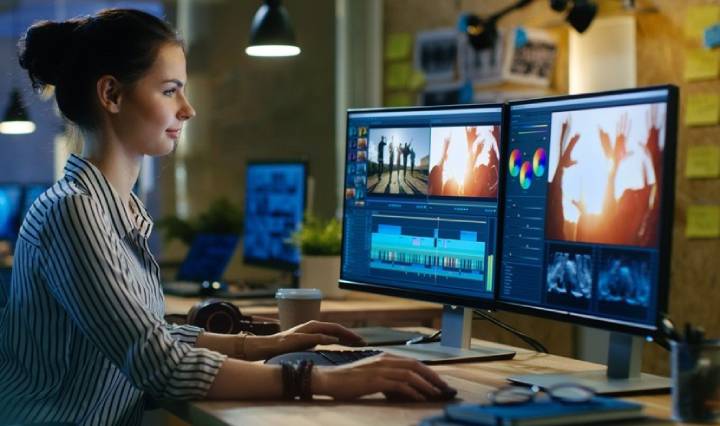Preparing a healthy workplace. Eyes and Video Games

- Eyes and Video Games – How to Take Care of Your Eyesight as a Gamer?
- Exercises and eye drops
- Lighting intensity, anti-reflex coating, healthy eyes diet
- Preparing a healthy workplace
Preparing a healthy workplace
Proper display screen setup and correct positioning
The distance at which we sit from the monitor has crucial impact on our eyesight. It is recommended that user's face shouldn't be closer than 40-75 cm [15-30 Inches] to the display screen (this value varies slightly depending on the screen size and resolution). Therefore, if you have a problem with font size or distinguishing elements on the desktop, it is better to increase their size instead of sitting closer to the screen. Also, maybe visit an eye-specialist, because you probably need to invest in stronger glasses.
Your display device should be placed at an appropriate height – preferably the upper part of the monitor must be at the same level as your eyes.
In addition to enabling night mode in Windows (even when working during the day!), reduce the brightness of the screen and increase the contrast between black and white. These settings may protect your eyes from getting over-strained.

Weather and climate are important factors too
Dry air causes eyes to fatigue much faster – which often can result in eye itching, tearing, feeling of "sand under the eyelids" and different sorts of ache. The optimum level of air humidity in the room in which we work with a computer should be more or less maintained around 50%.
In the summer, the air is effectively dried by air conditioning, and in the winter by central heating. Therefore, regardless of the season, it is worth to ventilate the office or a room often and get an air moisturizer (or any type of decent air cleaner).
Fatigue, stamina or endurance
This may sound trivial, but if you're very tired, you should take a break from using any screens. The state of exhaustion or insomnia has a negative impact on our eyes and the quality of vision. Eye strain can lead to discomfort and even pain.
A great way to relax (for eyes and not only) is the so-called palming technique. It consists in covering your eyes and leaving them in total darkness for several minutes.

Consult a doctor
Remember about the most important rule: if you experience any health issues while using a computer and none of the described methods helps you – don't wait! Immediately visit a qualified eye-specialist at nearest medical center. It's better to prevent than to cure. And problems concerning eye-sight or even loss of vision – they're not a joke and I hope none of our readers are currently experiencing any of those.
Cybernetic implants and augmentations
For centuries, mankind has been trying to replace lost limbs or even organs in any way possible. Eyes are one of the most complex biological devices of our body. Therefore, for many years various attempts have been made to create eye substitutes for blind people or those who have lost their sight as a result of an accident or illness.
One version of this invention consists of several elements. The foundation of the innovative device is a retina prosthesis, on which the image can be created. Additionally, users have mini-cameras placed in dark glasses, a special image-to-retina transmitter installed near eye socket, and a small micro-transmitter made of silicon or platinum, which sends a visual stimulus to the brain. In order to make the device work, the patient has to undergo a special procedure during which transmitters are connected directly to his/her brain. A person who used such invention was able to distinguish contours of objects, notice motion and light intensity. However, it works with a few seconds delay. Also, research on special lenses which may help people with eye diseases has just begun. But they are still in the testing phase.
It will take many years before the artificial replicas come close to their originals, if only it's possible. Evolution is like a skilled and very effective engineer – it's hard to follow and even harder to copy.
